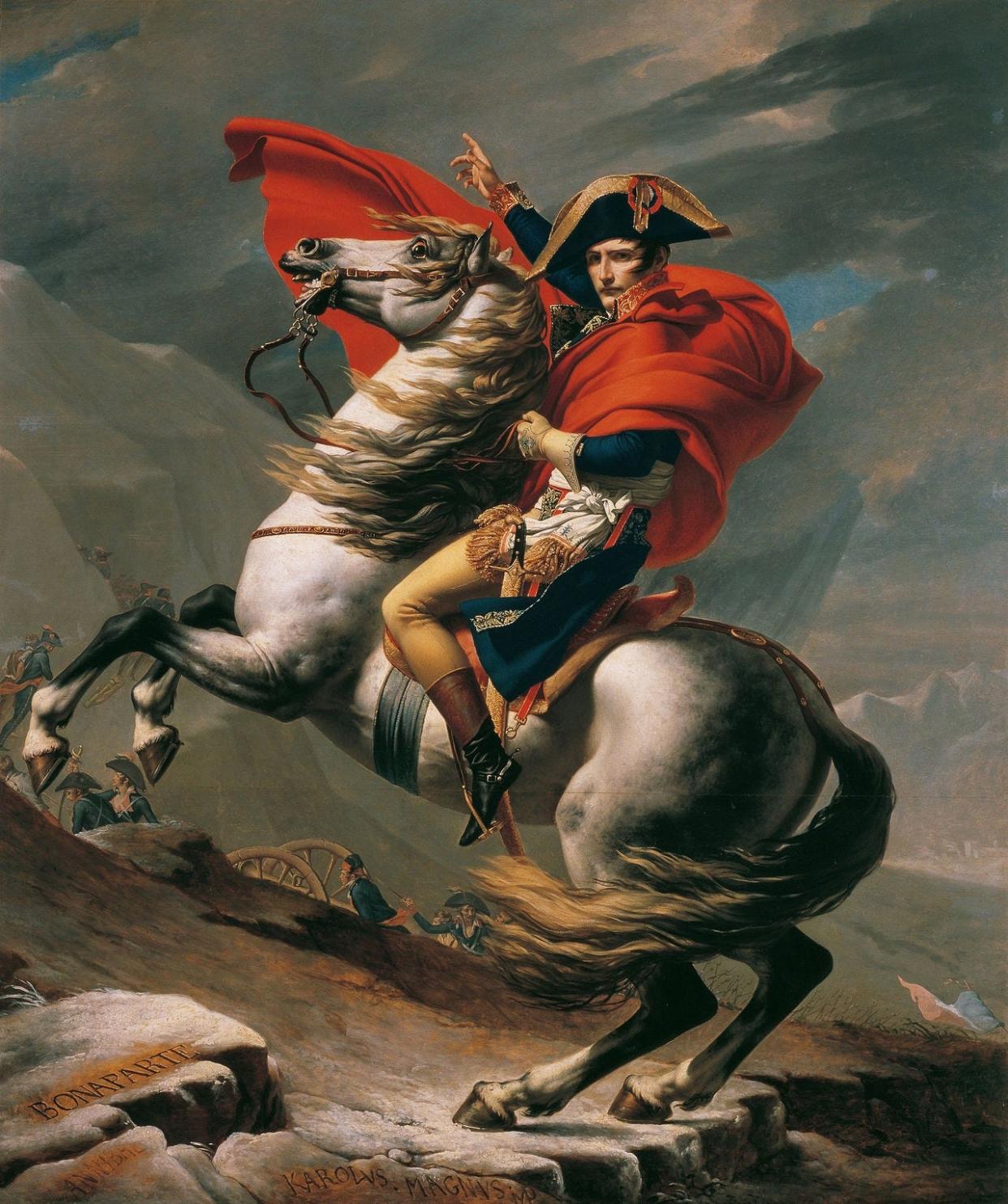From Marengo to Rome: Giacomo Puccini's "Tosca" in a Historical Perspective

- Oops!Something went wrong.Please try again later.
Have you been to Marengo, Iowa lately?
A town of 2,500 situated just north of Highway 80, featuring a National Register of Historic Places listed courthouse, a Carnegie library, and a venerable cemetery with a Civil War memorial, it is intricately connected to French history, just like Iowa City, which developed out of a settlement named Napoleon. Marengo’s very name is tied to Napoleon’s audacious victory in the Northern Italian town of Marengo on June 14, 1800, during the War of the Second Coalition.
After a rapid descent towards Milan through the Great St Bernard Pass − following in the footsteps of the Carthaginian general Hannibal and the first Holy Roman Emperor Charlemagne whose names appear as ancient graffiti under the hoofs of Napoleon’s white steed in the brilliant Jacques-Louis David rendition of this event - Napoleon regrouped and confronted the Austrian army that was trying to keep French revolutionary ideas bottled up on the French side of the Alps.
After much uncertainty, the outcome of Marengo was determined by the recklessness of youth (First Consul Bonaparte was 30) triumphing over the caution of age (the Austrian field marshal Baron von Melas was 71). It is precisely this victory of a young French Republic against the Austrian Empire that made Marengo an appealing name for several communities in the United States - still a relatively young republic that defeated an empire.
But what does this battle have to do with Puccini’s “Tosca”? PLENTY!
“Tosca” is one of the most date-specific operas ever created - the action takes place in 1800, in the afternoon and evening of June 17 and morning of June 18, just days after the French victory at Marengo - while Napoleon is pursuing his relentless march on Rome, where “Tosca” takes place.

Napoleon stormed Rome two years prior, in 1798, during his First Italian Campaign, and created the short-lived Roman Republic (1798–1799), France’s sister republic and a mortal threat to the established royalist order of Europe. The anti-revolutionary forces of the Second Coalition reversed Napoleon’s Italian victories while he was pursuing military glory in Egypt, but his sudden return and alarming victory at Marengo turned Rome once again into an unstable city in the center of a disunited Italy where royalist and republican forces battled for control, disrupting the lives of Puccini’s characters caught up in a web of political and ideological power realignments.
Based on the 1887 play “La Tosca” by the French playwright Victorien Sardou, Puccini’s 1900 masterpiece demands, along with the appreciation of some of his greatest arias, an understanding of the historical moment that informed the events of both the play and the opera. The clash between the authority of the state and the rights of an individual are represented in the figures of Rome’s powerful royalist chief of police Baron Scarpia and the revolutionarily inclined painter Mario Cavaradossi, the love interest of the opera’s title character. In the upcoming Cedar Rapids Opera production of “Tosca” (January 19 and 21) Metropolitan Opera’s Norman Garrett and Chaz’men Williams-Ali will appear as Scarpia and Cavaradossi - with Maria Natale’s debut in the title role. Passion, faith, betrayal, revenge, lust, politics, nationalism, sacrifice, murder - “Tosca” is a heady brew of ingredients that make great opera grand!!!
I first saw “Tosca” at the Bolshoi when I was a teenager, seated with my mom in SPECTACULAR seats that my dad managed to secure for us. After the final curtain, he exited his balcony seat and waited for us outside. And waited… And waited… After a while, he asked one of the ushers to help him look for us. My mom and I were still in the parterre, with me sobbing so earnestly and hopelessly, my mom could not dislodge me from my seat…
And “Tosca” haunts me still. I am concluding this article standing in front of Castel Sant'Angelo in Rome where the catastrophic final moments of the opera take place. An imposing structure ominously looming over the Tiber River, first constructed as the Mausoleum of the Roman emperor Hadrian, it served as a papal fortress and a notorious prison over the centuries. It is here that Mario Cavaradossi and Floria Tosca clash with destiny on a June morning in 1800 as Rome is about to be swarmed by Napoleonic troops still elated from their victory at Marengo…
Please join my Jan. 11 Zoom talk on “Tosca’s Rome: The Play and the Opera in Historical Perspective” by Susan Vandiver Nicassio prior to the Cedar Rapids Opera production of “Tosca." Performances will be held Friday, Jan. 19 and Sunday, Jan. 21. My pre-opera talks will begin one hour before the curtains of both performances.
See you at the opera!
Anna Barker received her Ph. D. in Comparative Literature in 2002 with a dissertation in translation studies. At the University of Iowa she has taught courses in the English Department, in Comparative Literature, in Russian Literature, and in the Honors Program.
This article originally appeared on Ames Tribune: Barker: Giacomo Puccini's "Tosca" in a Historical Perspective

